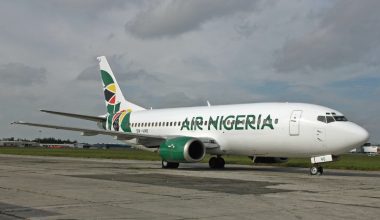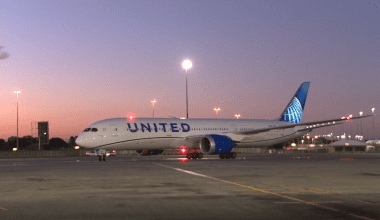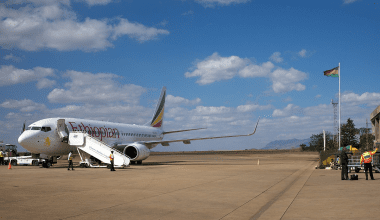Africa’s Ethiopian Airlines has removed two pilots from active duty who reportedly fell asleep at the controls during a flight between Khartoum International Airport (KRT) and Addis Ababa Bole International Airport (ADD) and failed to land at their scheduled destination. Pending further investigation, Africa’s biggest carrier has suspended two sleeping pilots from ongoing flight operations.

Sleepy pilots mid-flight
On August 15, two pilots operating Boeing 737-800 en route from Khartoum to Addis Ababa allegedly fell asleep in the cockpit mid-air while the flight was on autopilot mode, cruising at 37,000 feet. As a result, the passenger aircraft failed to descend on Ethiopian’s capital and missed the scheduled landing. Although Air Traffic Controllers at Addis Ababa tried to reach the crew several times, the Boeing 737 lost communication and became unresponsive to the point it overshot the airport runway. As soon as the aircraft passed the point of descent and continued along the route, the autopilot disconnected and triggered an onboard alarm (wailer), bringing sleepy pilots back to consciousness.
Also Read: Ethiopian Airlines plane overflies the airport as both pilots fall asleep
Eventually, the pilots woke up and circled the aircraft back to safe landing 25 minutes after overflying the runway the first time. Despite several minutes of communication blackout, ET343 restored the contact, maneuvered for another approach, and landed safely without harm or injury to anyone onboard.
It is yet to be revealed how long both pilots were asleep on what is supposed to be about a two-hour flight. The flight data shows the Boeing 737-800 aircraft cruising at FL370 approximately an hour prior to its scheduled landing at the destination airport. The incident did spark a safety alert but fortunately didn’t cause any harm or injury to anyone.
Pending investigation
The ET-343 incident took place a week ago, on August 15, and the concerned airline is still conducting a thorough investigation. In line with the statement issued by Ethiopian Airlines on August 19, both pilots have been suspended pending an additional inquiry. The carrier has announced to take appropriate disciplinary action depending on the conclusion of its internal investigation. The carrier didn’t mention pilots falling asleep, but it is possible that the concerned crew be dismissed from their job based on the outcome of the investigation.
Ethiopian Airlines is the only African carrier that remained profitable during the pandemic and weathered the crisis better than many other carriers. The Addis Ababa-headquartered airline has navigated through the pandemic turbulence by capitalizing on digitalization and agile diversification. The carrier is on a massive expansion plan and is poised to increase the fleet, route frequency, and passenger volume. Prior to B737 missed landing incident, Ethiopian Airlines witnessed the deadliest accident in 2019 when ET302, operated by B737 Max 8, crashed and killed 157 people onboard.
Pilot fatigue-a serious issue
Pilot fatigue is a significant threat to air safety as it leads to lapses in attention, reduced performance in flight, and impaired decision-making. The safety and lives of people onboard are in the hands of the pilots, and if they are exhausted due to several factors like unpredictable work hours, long duty periods, and insufficient sleep, they may fail to respond quickly and appropriately to situations. As a result, it may compromise passenger safety and cause serious aviation accidents and incidents.
Also Read: CAAN takes action against NAC’s sleeping pilot
Many aviation experts have attributed pilot fatigue to the reason behind the Ethiopian Airlines ET343 incident. Pilot exhaustion is on the rise due to a spurt in air demand after two year-hiatus and rising flight turmoil associated with severe weather. Unless the airlines treat fatigue as a safety risk, it will continue to affect pilots’ performance in a dynamic environment and jeopardize passenger safety.
Sleeping pilot case of ITA Airways
Earlier in May, ITA Airways Flight AZ609, operated by an Airbus A330, lost communication with ATC for over 10 minutes as both pilots on the control fell asleep during the flight. The flight en route from New York to Rome was flying at a normal speed and altitude on autopilot when it lost contact with ATC over France. Both flight crews weren’t awake mid-air; as per the provision on a long-range flight, the co-pilot was taking an approved rest, and the captain fell asleep for whatever reasons. The communication blackout ignited a terror alert, and fighter jets were scrambled to fly alongside A330. The flight crew responded shortly after and landed the aircraft safely at Rome airport. After conducting an internal investigation, ITA Airways fired the captain, citing inconsistent behavior with the airline’s regulations.






